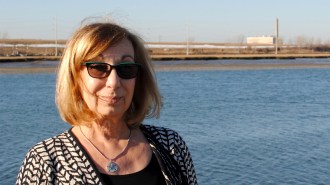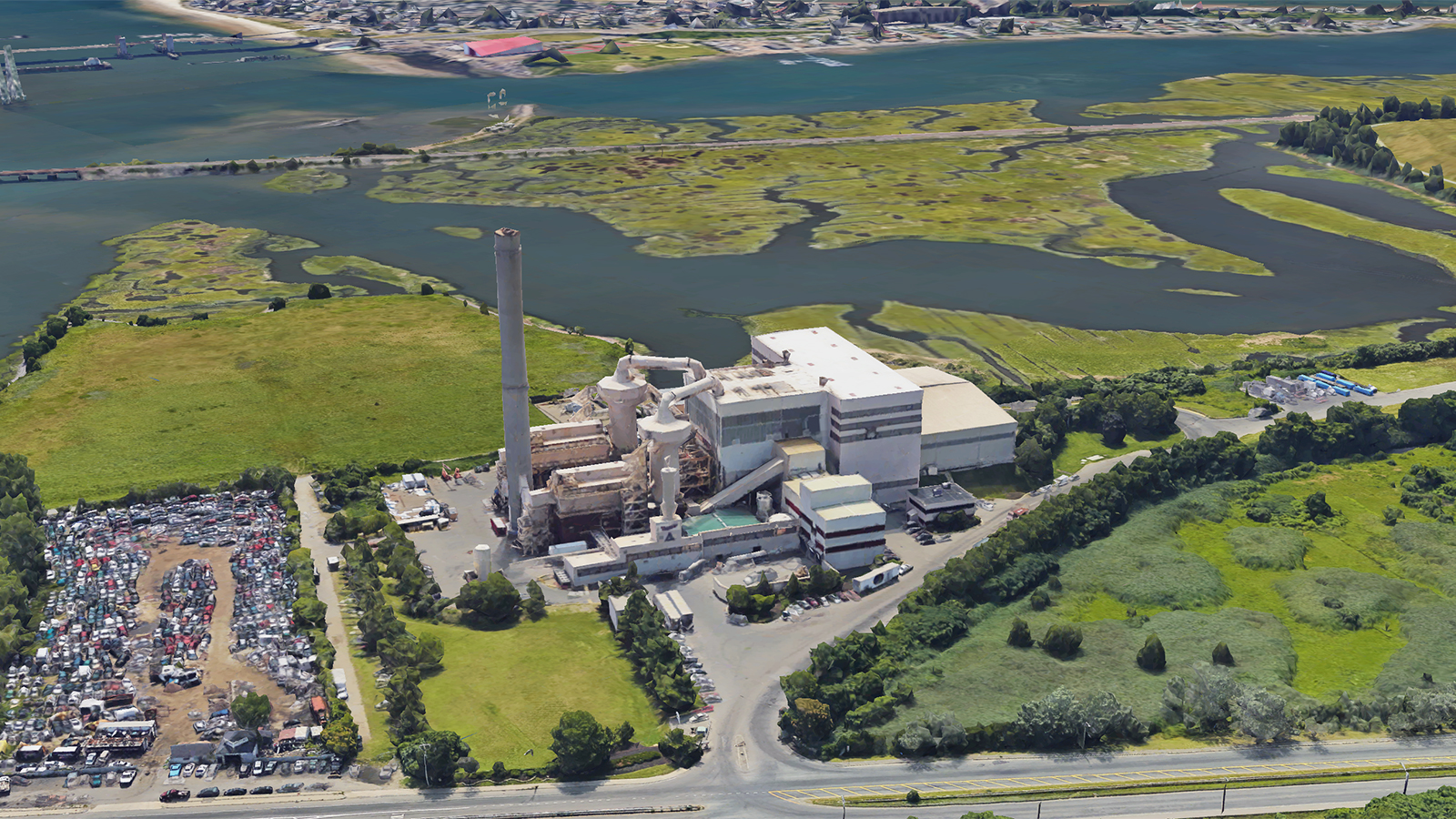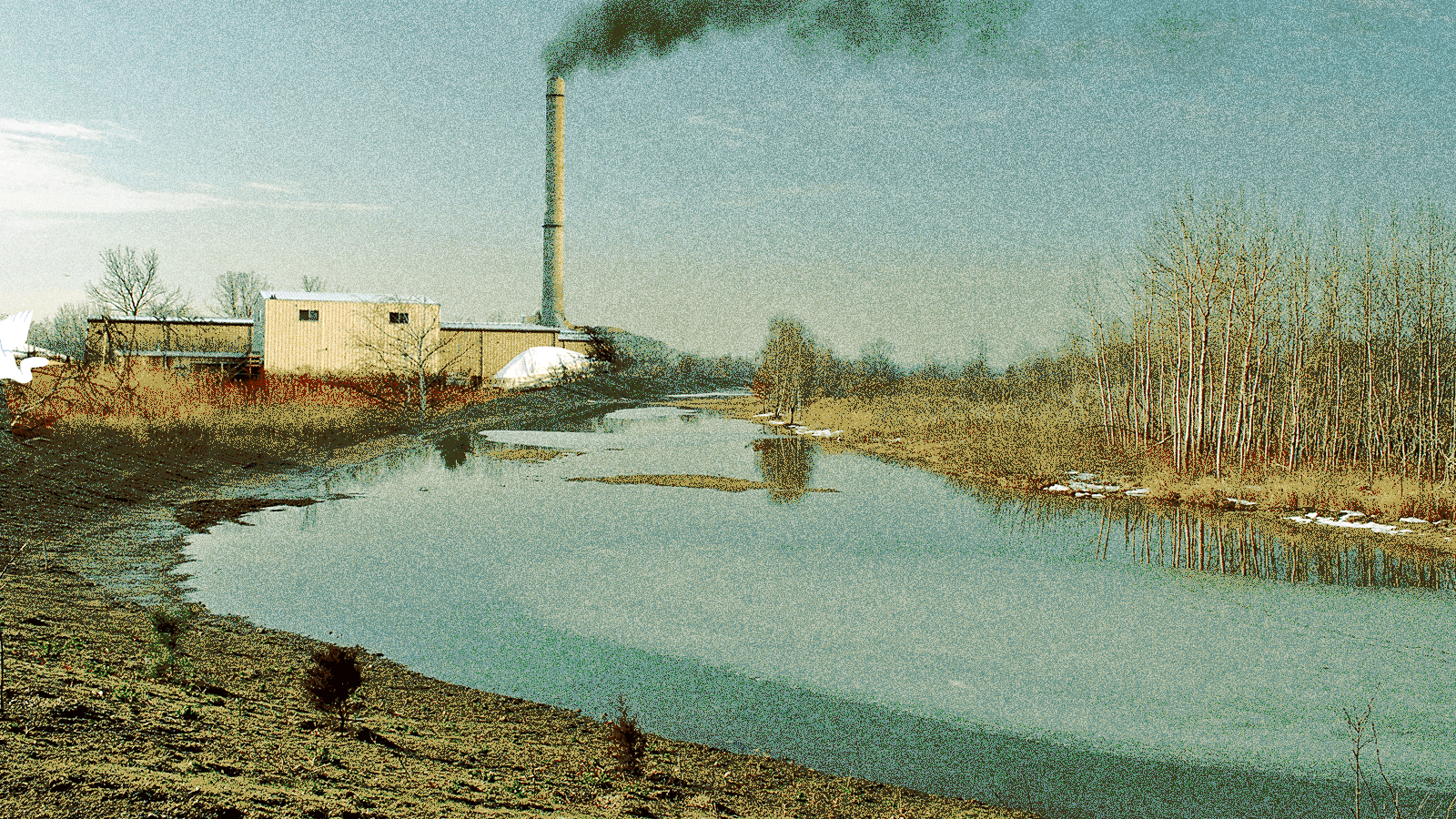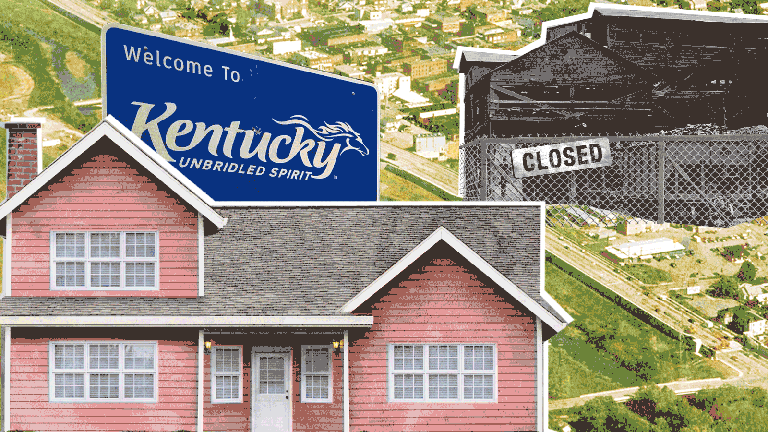Sitting on a park bench next to the Pines River on a sunny afternoon in Revere, Massachusetts, a few miles north of Boston, RoseLee Vincent recalls her childhood spent waterskiing on the river.
“This is where poor kids had fun,” the fourth-generation Revere resident remembers.
When she surveys the river today, her gaze often wanders to a garbage incinerator just over Revere’s border, in the neighboring town of Saugus. The facility, run by Wheelabrator Technologies, sits near the confluence of the Pines and the Saugus River. Vincent has spent nearly four years as a member of the Massachusetts House of Representatives trying to close it.
Wheelabrator Saugus, as the incinerator is known, burns trash gathered from surrounding neighborhoods and turns it into electricity. According to Wheelabrator, the facility can generate as much as 37 megawatts of energy — enough to power close to 40,000 homes. It also generates ash, which can contain hazardous heavy metals like arsenic, cadmium, and lead, that gets dumped in an adjacent landfill.
And that’s what concerns Vincent.
The 50-foot-high ash landfill is located in state-protected marshland, and its dump doesn’t have a plastic liner system underneath, as most modern landfills do. Without that boundary between the waste and the marsh, critics say poisons in the ash can leach into the surrounding marshland, threatening the health of the snowy egrets, herons, and a wide variety of wildlife inhabiting the wetlands as well as people living nearby.
Many residents worry the facility creates health issues — and have plenty of anecdotes related to early cancer diagnoses and development of autoimmune disorders — but finding evidence of this has remained elusive. And the company insists that it follows all local, state, and federal regulations.
“It’s a money maker — it’s very easy to burn and dump, burn and dump,” Vincent says. “It’s a disaster for my constituency.”
Vincent first drew up legislation that would limit the Wheelabrator facility’s activities in 2015, and she’s proposed new legislation in every session since she’s been a member of the Massachusetts House.

RoseLee Vincent Greta Jochem
But every effort to rein it in keeps getting quashed.
In 1988, when Massachusetts designated the marshland where Wheelabrator’s landfill is located as a protected area, it seemed like the incinerator’s days were numbered. Who would allow a toxic waste pile in a conservation area? In fact, the state planned to close the facility in 1996.
But the Massachusetts Department of Environmental Protection gave it a critical reprieve, allowing it to stay open until its landfill reached capacity.
Today, the Saugus incinerator’s landfill is nearly full. And Wheelabrator told Massachusetts that as of November 2016, the dump had one year of capacity left. But rather than closing down the facility as the state had decreed, the company requested permission to extend the dump’s life for an estimated five years by changing the gradient on parts of the landfill. The project would expand the size of the dump by 25 percent. The state issued a provisional decision last year allowing the project to move forward.
After more than four decades of operation and an expansion on the horizon, some residents like Vincent wonder when the landfill will actually reach the end of its life — putting to rest their worries about its pollution and their health. Worse, Wheelabrator’s opponents point out that with climate change bringing more forceful hurricanes up the Eastern seaboard, a storm surge could literally empty the landfill’s contents into the surrounding wetlands.
“People said, ‘She’s a crazy environmentalist!,’” Vincent recalls. “I felt compelled to craft legislation that would end this environmental injustice.”
In the town of more than 25,000 residents, the incinerator is a divisive topic. I spoke to Saugus residents in diners and coffee shops. A few would talk in hushed tones only after looking around to see who else was in earshot. Some consider Wheelabrator a steward of the community, a model corporate citizen that provides much-needed tax dollars. For others, it’s a nasty neighbor that’s poisoning their friends and families.
Loretta LaCentra has lived in Riverside, a Revere neighborhood less than a half-mile downwind of Wheelabrator, for more than 30 years. Her home is across the river from the facility, and she regularly kayaks through the Rumney Marshes. The fact that Wheelabrator can keep operating a dump in a protected marshland simply dumbfounds her.
“It’s 50 feet now,” LaCentra says about the ash pile. “How high is high enough for them?”
When trash is incinerated in a typical energy-from-waste facility, two types of ash are created: fly ash and bottom ash. Fly ash is typically 10 to 20 percent of the total ash, and it usually contains most of the dangerous metals.
In 1994, a U.S. Supreme Court ruling mandated that ash from municipal solid-waste incinerators be considered hazardous when toxic chemicals reach a certain threshold, as determined by the Environmental Protection Agency. But the agency’s regulations allow facilities to test their waste-toxicity from the total ash they generate — as opposed to simply testing the more-dangerous fly ash — making it less likely for tests to turn up hazardous levels.
Among the dangerous byproducts of trash incineration are dioxins, which the World Health Organization links to reproductive and developmental issues, damage to the immune system, and even cancer. According to the environmental advocacy group the Conservation Law Foundation, dioxins “have been described as the most toxic chemicals known to mankind.”
Back in 2011, Wheelabrator agreed to pay a $7.5 million fine — at the time Massachusetts’ largest alleged environmental violation settlement — for incidents at multiple facilities they own in the state. Sparked by two whistleblowers who worked at the Saugus incinerator, the state attorney general’s complaint alleged that thousands of gallons of ash spilled into the Wheelabrator parking lot and the Rumney Marshes after a filter broke. The complaint said that the company failed to immediately report the spill to the state and instead tried to clean it up on its own. In addition, according to the attorney general, a hole in the facility’s roof had allowed ash from burning trash to escape.
The company never admitted wrongdoing. But they’ve acknowledged more spills since then, including at least two in 2016.

The Rumney Marshes Area of Critical Environmental Concern Greta Jochem
Concerns about the toxicity of the ash stem in part from the fact that the plant’s landfill has no liner. According to the Massachusetts Department of Environmental Protection, Wheelabrator is one of only two unlined, active landfills in the state.
In Wheelabrator’s case, the disposal pile is built directly on top of an old solid-waste landfill which, in turn, sits on top of natural clay. Joseph Ferson, a spokesman for the state’s Department of Environmental Protection, said that it was “not feasible” to construct a conventional liner system because the ash landfill was built on top of another dump.
Without a liner, critics say there’s little protection for the salt marshes and tidal flats that make up the 2,800-acre Rumney Marshes Area of Critical Environmental Concern. In its comments when the marshes received their protected designation, The U.S. Fish and Wildlife Service called the site “one of the most biologically significant estuaries in Massachusetts north of Boston” but notes that shellfish from the wetlands are too contaminated for human consumption.
Jim Connolly, the company’s vice president of environmental health and safety, told Grist, “The ash monofill adjacent to the Wheelabrator Saugus facility includes a clay/soil barrier wall system that provides the equivalent groundwater protection as a traditional plastic.” He adds that this system complies with federal and state standards.
In 2015, Connolly appeared in a video interview with public policy master’s students at the University of New Hampshire. In it, he argued that because the current ash landfill is built on top of an old landfill, they aren’t dumping in the marsh — though official state documents have described the landfill as being situated within Rumney Marshes.
“The ash has always been placed on the footprint of where waste had previously been placed,” Connolly explained. “The previous landfill was in the marsh. When we got here and started placing ash, the marsh was no longer a marsh.”
Last May, the Conservation Law Foundation filed a notice of intent to sue Wheelabrator for allegedly failing to monitor the groundwater around the landfill and thus violating the Resource Conservation and Recovery Act. Their intent letter further alleges that Wheelabrator is violating the Clean Water Act by discharging contaminated groundwater into the nearby surface waters without a permit.
“This is a highly sensitive ecological area that deserves a very, very high level of protection,” says Heather Murray, a staff attorney at the foundation. “A new landfill would never be allowed to be sited there in the first place.”
Last February, members of the Saugus Town Meeting voted in new rules that would limit the height of any ash landfill. They would effectively cap Wheelabrator’s dump at its current height 50 feet. The Massachusetts attorney general’s office struck the regulations down six months later — saying they intruded on the power of the Department of Environmental Protection.
Before the town voted, Wheelabrator had threatened to sue to have the restrictions reversed (and promised to pass any costs to the company onto the town). It was a serious concern for some residents. “We are forcing Wheelabrator to take the town to court,” Town Meeting member Bill Brown commented to the Saugus Advertiser. “And that will cost hundreds of thousands of dollars.”
That’s an expense the community of Saugus — where the per-capita income is nearly 10 percent below the state’s — likely could not bear. The facility is next to several communities that are either low-income or have sizable minority contingents that the state has designated as “environmental justice populations.” In Massachusetts there are six other municipal waste incinerators like the one Wheelabrator operates in Saugus. According to state data, all seven are in or near communities with the designation.

The Wheelabrator Saugus waste-to-energy plant Google Earth
Complicating Saugus’ relationship with Wheelabrator is the fact that the company is one of the town’s largest taxpayers. The company is quick to remind the community of its financial clout. In an ad the company placed in the Saugus Advertiser in January 2017, Wheelabrator claimed it paid $4 million to the town in taxes and philanthropy.
The company donates to local schools, and provides 60 full-time jobs, according to its website. It won a community service award in 2013 after sponsoring the Saugus High School golf tournament and donating a new scoreboard to the school’s gym. In a series of videos touting its relationship to Saugus, the company said that it gave land to the high school’s golf team to use as a driving range.
“Every time we ask Wheelabrator for help, they not only come through, but in many cases Wheelabrator employees contribute time, energy, and funding beyond what we have asked for,” Mike Nelson, the former Saugus High School athletic director, told The Daily Item, a local newspaper in nearby Lynn.
The company also promotes its maintenance of the 370-acre Bear Creek Wildlife Sanctuary, an area near the facility that plays host to snowy egrets, great blue herons, and buffleheads. The sanctuary popular with local bird watchers — some of whom credit Wheelabrator with providing open habitat for grassland-breeding birds, like sandpipers.

Saugus Town Meeting member Bill Brown Greta Jochem
Americans generate a lot of garbage — 254 million tons of trash in 2013, according to the EPA. If it’s not reused or recycled, there are two main options for it: a solid-waste landfill or an incinerator.
“Neither is good for the environment,” says Anne Marie Desmarais, a lecturer in civil and environmental engineering at Tufts University. “But probably landfilling is worse.” Incinerators, she says, are somewhat of a necessary evil.
Bill Brown, the Saugus Town Meeting member, says that when it first opened in the 1970s, many community members saw the Wheelabrator facility — which burns 1,500 tons of trash per day — as environmentally friendly.
“We’re producing electricity, and we’re getting rid of our trash all at once,” Brown recalls town folk thinking.
And thus far, Brown says, no one’s made a convincing case for an alternative. Advocates working to close or limit the incinerator’s operations have yet to present conclusive proof — such as increased rates of cancer or asthma — that living near the facility has harmed their health.
That’s what keeps Brown from joining the crowd aligned against Wheelabrator.
“In everything that they’ve done,” he says, “they’ve never ever offered clinical data, studies, reports, brought forth scientists or anyone that could say the problems in this area are directly related to Wheelabrator.”
But LaCentra, who lives across from the facility, is concerned the incinerator is sickening people. In 1996, her husband, a lifelong Revere resident, was diagnosed with kidney cancer when he was 42. The doctor was shocked he’d developed it so young, LaCentra recalls, because the average age when the disease strikes is 64. According to the American Cancer Society, the diagnosis “is very uncommon in people younger than age 45.” Kidney cancer is linked to exposure to toxins in drinking water, including arsenic.
“I am suspect of Wheelabrator after having seen too many cancer cases, respiratory issues, and autoimmune issues in my 30 years of living in the Riverside neighborhood,” LaCentra wrote in a letter to the state in 2016, asking the state to close the ash landfill.
The data that has been collected doesn’t back up LaCentra’s suspicion. A March 2016 paper by the state health officials looked at incidence of cancer in Saugus and concluded that, overall, there is not an unusual pattern of cancer in the town.
Soon after the report, RoseLee Vincent co-founded the Alliance for Health and Environment, which advocates for closing Wheelabrator’s ash landfill. Members of the organization argue that the study isn’t complete because it only looked at Saugus — leaving out sections of Lynn and Revere that are within a tight radius of the facility. Further, they argue, cancer is not the only potential public health problem: asthma and other respiratory issues are, too.
According to the Bureau of Environmental Health, their cancer study was done at Wheelabrator’s request — though the agency did not evaluate the impact of the company’s incinerator, specifically. The Conservation Law Foundation points to a 2015 report by Massachusetts Department of Health that did find that between 2007 and 2011, residents of Saugus, Revere, and Lynn reported “higher than expected” numbers of new cancer diagnoses — though no underlying cause was identified.
Brown notes that Wheelabrator is not the only industrial facility that’s polluting the area. He points out a General Electric plant across the Saugus River where he worked for 34 years.
“Yeah, Wheelabrator is a contributor,” Brown says. “But so is GE.”
Back by the Pines River, Vincent, the state representative, continues to try to reconcile her carefree childhood on the waterway with the incinerator on its shores today. She’s convinced that now is the time to stop Wheelabrator from increasing its footprint in the Rumney Marshes.
If the company can’t be pushed back now, she says, there’s no end to how tall their ash pile will get.
“This wasn’t here when I was a kid,” Vincent says, looking across the river at the incinerator and landfill. “I would like it to be gone for future generations.”




